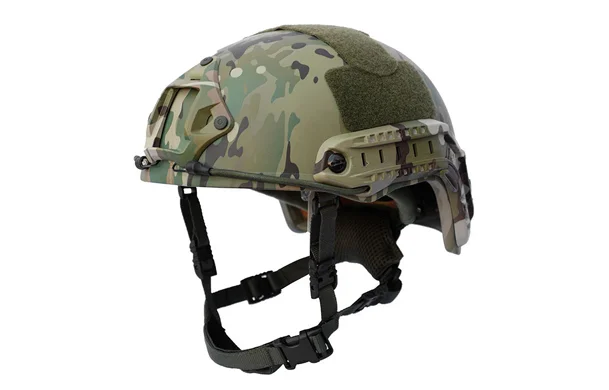Ballistic helmets play a critical role in modern protective gear, offering enhanced safety to those in high-risk professions such as law enforcement, military personnel, and security personnel. The process of crafting these helmets involves a blend of advanced materials, precise engineering, and rigorous testing. This article delves into the intricate process of creating ballistic helmets, from material selection to manufacturing techniques, highlighting the efforts taken to ensure optimal protection.
Material Selection
The foundation of a reliable ballistic helmet lies in the selection of suitable materials. Advanced materials like Kevlar, Dyneema, and ceramics are commonly employed due to their exceptional strength-to-weight ratios and ability to dissipate impact energy. Kevlar, a para-aramid synthetic fiber, is renowned for its impressive resistance to bullets and fragments. Dyneema, a high-performance polyethylene fiber, offers comparable ballistic performance with the added benefits of lightness and flexibility. Ceramics, such as boron carbide and alumina, are integrated as strike faces to dissipate and spread the force of impact.
Design and Engineering
The design of a ballistic helmet requires a delicate balance between protection, comfort, and functionality. Engineers utilize computer-aided design (CAD) software to create helmet prototypes that optimize coverage while minimizing weight. Factors like head mobility, ventilation, and compatibility with other gear are carefully considered during this stage. The helmets are designed to meet specific threat levels, which vary based on the projectiles they are expected to withstand.
Manufacturing Process
- Preparation of Materials: The chosen materials are carefully prepared for production. Kevlar or Dyneema fibers are woven into sheets, while ceramic materials are molded into the desired shape.
- Layering and Lamination: In the case of composite helmets, layers of Kevlar or Dyneema fabric are combined with resin to create a composite material. These layers are then stacked and pressed together under controlled conditions to form a solid, layered structure.
- Molding: Ceramic strike faces are molded into shape using specialized equipment and molds. These shapes are intricately designed to optimize impact dispersion.
- Integration: In some designs, the strike face is combined with the composite material, forming a cohesive unit that provides both ballistic protection and structural integrity.
- Cutting and Shaping: The composite material is cut into helmet shell shapes using computer-guided precision machinery. These shapes are designed to fit comfortably while providing maximum coverage.
- Assembly: The helmet shell is assembled, with additional components such as padding, straps, and retention systems added. These elements contribute to the wearer’s comfort, stability, and the helmet’s overall effectiveness.
Quality Control and Testing
Rigorous quality control and testing procedures are crucial to ensuring the helmets’ reliability. These tests include:
- Ballistic Testing: Helmets are subjected to various ballistic tests to assess their performance against different types of projectiles. These tests are conducted in controlled environments, measuring the helmet’s ability to stop or deflect projectiles while minimizing blunt force trauma.
- Environmental Testing: Helmets are exposed to extreme temperatures, humidity, and other environmental conditions to evaluate their durability and performance in harsh situations.
- Drop Testing: Helmets undergo drop tests to simulate real-world impact scenarios and assess their ability to withstand falls without cracking or losing effectiveness.
- Comfort and Fit Testing: Human wear trials are conducted to ensure the helmets fit securely, are comfortable for extended periods, and allow for proper movement.
The creation of ballistic helmets is a complex process that involves careful material selection, meticulous engineering, and thorough testing. These helmets serve as a crucial line of defense for professionals working in high-risk situations. By combining cutting-edge materials, innovative designs, and rigorous testing, manufacturers ensure that ballistic helmets provide the necessary protection while maintaining wearer comfort and usability.

